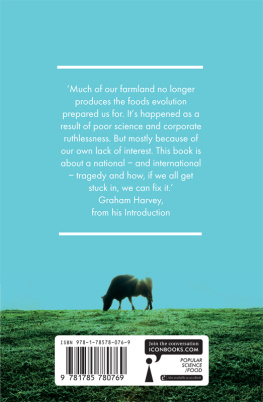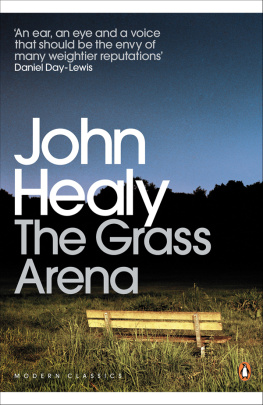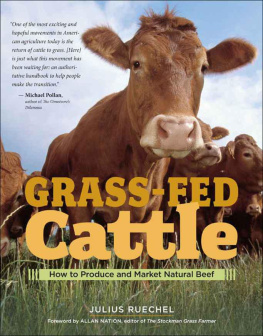BIBLIOGRAPHY
1. ALBRECHT, W. A. More and better proteins make better food and feed, Better Crops with Plant Food Magazine (1952).
2. ALLCROFT, Ruth. Hypomagnesaemia: A summary of evidence, Agricultural Review, 1, 47-50 (1955).
3. ALLCROFT, Ruth. Hypomagnesaemia of cattle and sheep in Britain, Journal of the British Grassland Society, 11, 119-120 (1956).
4. ANDERSON, James. Essays Relating to Agriculture and Rural Affairs. ( a ) 2nd edition. Edinburgh (1777); (b) 4th edition. London (1797).
5. ANONYMOUS. Le Premier pas: Lexploitation rationnelle des Herbages (The First Step: Rational Management of Grassland ) . Brochure de Propagande du Ministre de 1Agriculture (Paris, 1951).
6. ANONYMOUS. Urea as a protein replacement for ruminants, Nutrition Reviews, 12, 43-45 (1954).
7. ANONYMOUS. Bigger toll from grass sickness: severe outbreaks in Northumberland, Farmers Weekly (July 16, 1954).
8. BALFOUR, Eve. 9600 miles in a station wagon. IV. Some findings by agricultural scientists, Journal of the Soil Association, 8, 48-64 (1951).
9. BONNER, J., and GALSTON, J. W. Principles of Plant Physiology, San Francisco (1952).
10. BROWN, D. Methods of surveying and measuring vegetation, Commonwealth Agricultural Bureaux Bulletin No. 42 (1954).
11. BRUNDAGE, L., and PETERSEN, W. E. A comparison between daily rotational grazing and continuous grazing, Journal of Dairy Science, 35, 623-630 (1952).
12. CAPUTA, J. Organisation et exploitation des paturages ( Organisation and Management of Pasture ) , Association pour le Dveloppement de la Culture Fourragre. Berne (1952).
13. CASTLE, M. E., FOOT and HALLEY. Some observations on the behaviour of dairy cattle with particular reference to grazing, Journal of Dairy Research, 17, 215-230 (1950).
14. CHALMERS, M. I., CUTHBERTSON, D. P., and SYNGE, R. L. M. Ruminal ammonia formation in relation to the protein requirement of sheep. I. Duodenal administration and heat processing as factors influencing fate of casein supplements, Journal of Agricultural Science, 44, 254-262 (1954).
15. CZERWINKA, W. Buerlicher Futterbau: mehr und besseres Futter von kleinerer Flche (Forage cultivation on the small farm: more and better forage in a smaller area), Graz (1952).
16. DANCEY, R. J. The influence of management on the subsequent productivity of pasture. B.Sc. (with Honours) thesis at the University of Nottingham (1955).
17. ELLISON, W. The animal is the best judge, Farmers Weekly (Oct. 22,1948).
18. ETTER, A. G. Animal behaviour: study of their habits has much to teach us, Journal of the Soil Association, 8, 73-78 (1954).
19. EVANS, A. C. The importance of earthworms, Farming (February 1948).
20. FALKE. Die Dauerweiden ( Permanent Pastures ) . Hanover (1907).
21. FINCK, A. Okologische und bodenkundliche Studien iiber die Leistungen der Regenwrmer fur die Bodenfruchtbarkeit (Ecological and pedological studies on the influence of earthworms on soil fertility), Zeitsehrift fiir Pflanzenzernhrng, Dngung, Bodenkmde, 58, 120-145 (1952).
22. FISSMER. Beitrge zur Frage der Sttigung bei der Milchkuh (How to satisfy a dairy cows appetite), Zeitsichrift fr Tierernhrung und Futter-mittelkunde. Band. 8 (1941).
23. FLANDIN, P. Dans une ferme du Berry, les paturages tournants amliorent la production (On a Berry farm rotational grazing improves production), Frarue Agricole (August 30, 1954).
24. FRANZ H. Bodenzoologie als Grundlage der Bodenpflege ( Zoology of the Soil as a Basis for Methods of Cultivation ) . Berlin (1950).
25. FRASER, Allan. But is it science? Farmers Weekly (November 9, 1948).
26. GEERING, J. Uber den Einfluss der Hufigkeit des Wiesenschnittes auf Pflanzenbestand, Nhrstoffgehalt und Nhrstoffertrag (Influence of frequency of cuts in mown fields on the flora and content and yield of nutrients), Landwirtschaftliche Jahdbcher der Schweiz , 55, 579-595 (1941).
27. GEITH, R. Der Nahrstoffgehalt des Weidegrases und sein Einfluss auf die Bewirtschaftung der Deutschen Weiden (Nutrient content of pastures and their effects on systems of management of German grassland), Landwirtschaffliche Jahrbcher, 82, 187-196 (1936).
28. GEITH, R. Die Verbesserung der Normen zur Ermittlung des tierischen Nutzertrags einer Weide (Improvement of norms used to determine animal production from a pasture), Fourth International Grassland Congress. Aberystwyth, 434-440 (1937).
29. GEITH, R. Neuzeitliche Weidewirtschaft ( Modern Methods of Grassland Manage-mentI). Berlin (1943).
30. GEITH, R., and FUCHS , K. Grnlanfibel ( Grassland Manual ) . (Berlin 1943).
31. GILBERT, M. Recherches sur les espces de prairies artificielles quon peut cultiver avec le plus davantage dans la gnralit de Paris (Enquiry into the types of temporary pastures, which can be most profitably developed in the region of Paris), Mmoires dAgriculture, dEconomie Rurale et Domestique. La Socit Royale dAgriculture (Paris, 1788).
32. GRAFF, O. Bodenzoologische Untersushungen mit besonderer Beriicksichti-gung der terrikolen Oligochten (Enquiry into zoology of soils and especially the Oligochta), Zeitschrift fr Pflanxenernahrung, Dngung und Bodenkunde, 61, 72-77 (1953).
33. GREGOR, J. W. The use of complementary grassland, Scottish Agriculture, 26, 104-109 (1946).
34. GRNINGEN, F. Von. Die Bedeutung des Unkrautes fr die Emhrung des Rindviehs (The importance of weeds in the feeding of beef cattle), Fifth International Grassland Congress, Holland (1949).
35. HANCOCK, John. Grazing habits of dairy cows in New Zealand, Empire Journal of Experimental Agriculture, 18, 249-263 (1950).
36. HANCOCK, John. Studies in monozygotic cattle twins. IV. Uniformity trials: grazing behaviour, New Zealand Journal of Science and Technology, (32), 22-59 (1950).
37. HANCOCK, John. Grazing behaviour of identical twins in relation to pasture type, intake, and production of dairy cattle, Proceedings of the Sixth International Grassland Congress, 1399-1407 (1952).
38. HEIM, G. Au sujet du pturage intensif (About intensive grazing), Revue Romande dAgriculture, de Viticulture et dArboriculture, No. 11 (1949).
39. HEINE, G. O. Nutzbarmachung des Elektrozaunes in der Weidetechnik (Use of the electric fence in the management of pastures), Das Grnland (April and May 1954).
40. HODGSON, R. E. Influence of pasture management upon the grazing habits of dairy cattle, Journal of Agricultural Research, 47, 417-424 (1933).
41. HOLMES, W., WAITE, R., FERGUSSON, D. L., and CAMPBELL, Jean I. Studies in grazing management. I. A comparison of the production obtained from close-folding and rotational grazing of dairy cows, Journal of Agricultural Science, 40, 381-391 (1950).
42. HOLMES, W., WAITE, R., FERGUSSON, D. L., and CAMPBELL, Jean I. Studies in grazing management. IV. A comparison of close-folding and rotational grazing of dairy cows on intensively fertilized pasture, Journal of Agricultural Science, 42, 304-313 (1952).
43. HOLMES, W. The feeding value of grass and grassland products, Proceedings of the British Society of Animal Production, 90-112 (1952).
44. HOLMES, W. High milk yields per acre from grassland, Journal of the British Grassland Society, 9, 17-27 (1954).
45. HOLMES, W. Modern methods of grassland management in feeding the dairy herd, Proceedings of the Nutrition Society, 13, 19-22 (1954).
46. HOLMES, W. The intensive management of pasture for dairy cows, Sixth International Grassland Congress, 1, 377-383. Pennsylvania State College (1952).
47. IVINS, J. D. The relative palatability of herbage plants, Journal of the British Grassland Society, 7, 43-54 (1952).













